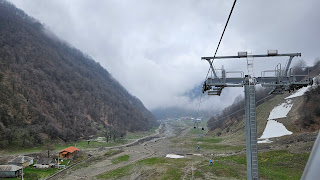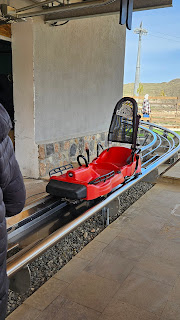Azerbaijan
Azerbaijan, officially the Republic of Azerbaijan, is a transcontinental country located at the boundary of Eastern Europe and West Asia. It is a part of the South Caucasus region and is bounded by the Caspian Sea to the east, Russia's republic of Dagestan to the north, Georgia to the northwest, Armenia and Turkey to the west, and Iran to the south. Baku is the capital and largest city.
Azerbaijan has a rich and complex history, dating back to ancient times. It was part of various empires throughout its history, including the Achaemenid Empire, the Median Empire, the Sassanian Empire, the Arab Caliphate, the Safavid Empire, the Russian Empire, and the Soviet Union. Azerbaijan gained independence from the Soviet Union in 1991.
Azerbaijan is a beautiful country with a rich culture and history. The country is home to a variety of natural attractions, including mountains, forests, and beaches. Azerbaijan is also home to a number of historical and cultural attractions, including the walled city of Baku, the Palace of the Shirvanshahs, and the Gobustan Rock Art.
Recently, Azerbaijan has opened up its tourism. Because of its variety of attractions, the country looked interesting and I made a quick tour here. I shall walk you through the tours briefly.
Day 1: Arrival in Baku and City tour
Baku, the capital and largest city of Azerbaijan, is a beautiful and vibrant city with a rich history and culture. The Baku city tour allowed me to explore its many facets, from its ancient walls and historical landmarks to its modern architecture and bustling energy. First the tour started with a visit to Highland Park. Highland Park, also known as Upland Park or Dagustu Park by locals, is a popular public park located on a hill overlooking Baku, Azerbaijan. The park offers stunning panoramic views of the city skyline and the Caspian Sea, making it a popular spot for locals and tourists alike. From the park's elevated vantage point, we could take in a panoramic vista of Baku, including the Caspian Sea, the Flame Towers, the Old City, and the surrounding cityscape. The park is well-maintained with plenty of trees, benches, and walking paths, providing a tranquil space to unwind and enjoy the fresh air. Within the Highland Park complex, you'll find a memorial park dedicated to Azerbaijani soldiers who died in the Nagorno-Karabakh War. The park features a martyrs' alley lined with tombstones and an eternal flame. It's a beautiful spot to relax, enjoy the views, and experience a slice of local life in Baku. Next to the park is the Flame towers. These three towering skyscrapers are a prominent landmark in Baku's skyline. The facade of these towers is covered with LED screens that display colorful lighting effects and animations, especially stunning at night.
Mini Venice, also known as Little Venice, is a charming man-made canal network located along Baku Boulevard in Baku. Inspired by the famous Italian city of Venice, this unique attraction features a series of interconnected waterways, colorful buildings, and gondolas, offering a delightful and romantic experience for visitors. There is a gondola ride along the canals to enjoy the charming atmosphere. The gondolas are traditionally steered by a gondolier, although some may be self-paddled. The ride itself is quite short, but it's a fun way to see the canals and take photos. Several restaurants are located on the islands within the canal network, offering a variety of cuisines, including Azerbaijani and European fare.
This day was a tour to the town of Gabala. Gabala is a hill station about 220 kms from Baku, around a 4 hour drive. On the way, the first stop was at the Jumma Masjid at Shamakha. This is the oldest mosque in Azerbaijan. Continuing, the next stop was the Yeddi Gozel Waterfalls or the Seven Beauties waterfalls. This is a cascade of seven waterfalls surrounded by lush forests, offering a refreshing escape and a scenic spot for photos. Next stop was Nohur lake. This is a captivating mountain lake surrounded by lush greenery, perfect for a boat ride or simply relaxing on the shore and soaking up the tranquillity of nature. The next and the final stop was Tufandag Mountain. This is a resort and one can take a cable car up Mount Tufandag for breathtaking panoramic views of the surrounding mountains and valleys. Unexpectedly, there was a snow cover atop the mountain and it added more fun to the tour. There are hiking and skiing trails here.
After admiring the beautiful views and the cold weather on the mountain, I retreated back to Baku for a good rest.
Day 3: Gobustan and Absheron tour
The day was a trip to Gobustan.Gobustan is located approximately 60 kms southwest of Baku. If you are a history buff, then this trip is for you. The Gobustan Rock Art Cultural Landscape is a UNESCO World Heritage Site renowned for its ancient petroglyphs, mud volcanoes, and rugged landscapes. The tour started with a stop at the Gobustan museum which houses a collection of archaeological finds and exhibits that shed light on the region's rich history, dating back to the Paleolithic era.
The next stop was the Gobustan open air museum. The museum showcases over 6,000 rock engravings (petroglyphs) believed to be created between 20,000 BC and 1,800 AD. These carvings depict a variety of subjects, including animals like gazelles, bulls, and horses, hunting scenes, ritualistic dances, and even boats, offering a window into the lives of the people who inhabited this region millennia ago. Next stop was the famous mud volcanoes. Azerbaijan is famous for its mud volcanoes, and Gobustan boasts several of these fascinating geological marvels. Witness the churning mud pools and experience the unique bubbling landscape sculpted by these natural wonders. In these regions, the methane gas lies under the soil and when it reacts with water, the gases come out spurting mud in the form of a volcano. The mud is rich in minerals and when applied on skin, it rejuvenates and glows it.From Gobustan, the tour moved on to Absheron. The first stop here was the Ateshgah Fire Temple. This is a Zoroastrian fire temple, located just outside Baku. This historical site was built in the 17th century on a spot where natural gas burns continuously, fueling the flames that once held religious significance for Zoroastrians. The next stop was Yanar Dag or the burning mountain. Natural gas seeps out of a hillside and ignites due to contact with oxygen, creating a mesmerising spectacle of flames flickering on the mountainside. The fire has been burning for 4000 years.That was the last stop and returned to the hotel for some sleep.
Day 4: Shahdag tour and departure
The last day of my Azerbaijan tour was scheduled for a trip to Shahdag. Shahdag is a popular tourist destination in Azerbaijan, about 220 kms from Baku, renowned for its stunning natural beauty, winter sports facilities, and luxurious resorts. Nestled in the Caucasus Mountains, Shahdag offers a variety of activities and experiences throughout the year. Shahdag boasts breathtaking landscapes with snow-capped peaks, lush forests, cascading waterfalls, and crystal-clear mountain lakes. I explored the scenic beauty of the region through hiking trails, cable car rides, or simply admire the panoramic vistas from observation points. During the winter months, Shahdag transforms into a winter wonderland, attracting skiers and snowboarders of all levels. The resort boasts well-maintained slopes, modern ski lifts, and professional instructors for those who want to learn or improve their skills. The not-to-miss attraction here is the alpine coaster called the Shadag coaster. Shahdag Coaster is a family thrill ride offering unforgettable adrenaline rushes in all seasons at the Shahdag Mountain Resort, which has no analogs in the South Caucasus. The route length is 2590 m, 920 m uphill, and 1670 m downhill. Double sleds run at intervals of 10 seconds, the speed of which can reach 42 km/h. The sled has brake levers, allowing you to control your journey thoroughly. The cable car takes you uphill to one of the observation points where one can enjoy the mesmerising views of the Caucasus.
After the tour, I reached Baku to catch my flight back home. Azerbaijan is truly a remarkable place. The costs are also reasonable here and there are Indian restaurants available. If you want to plan a 4-day holiday then Azerbaijan is a perfect getaway.



























































































































































